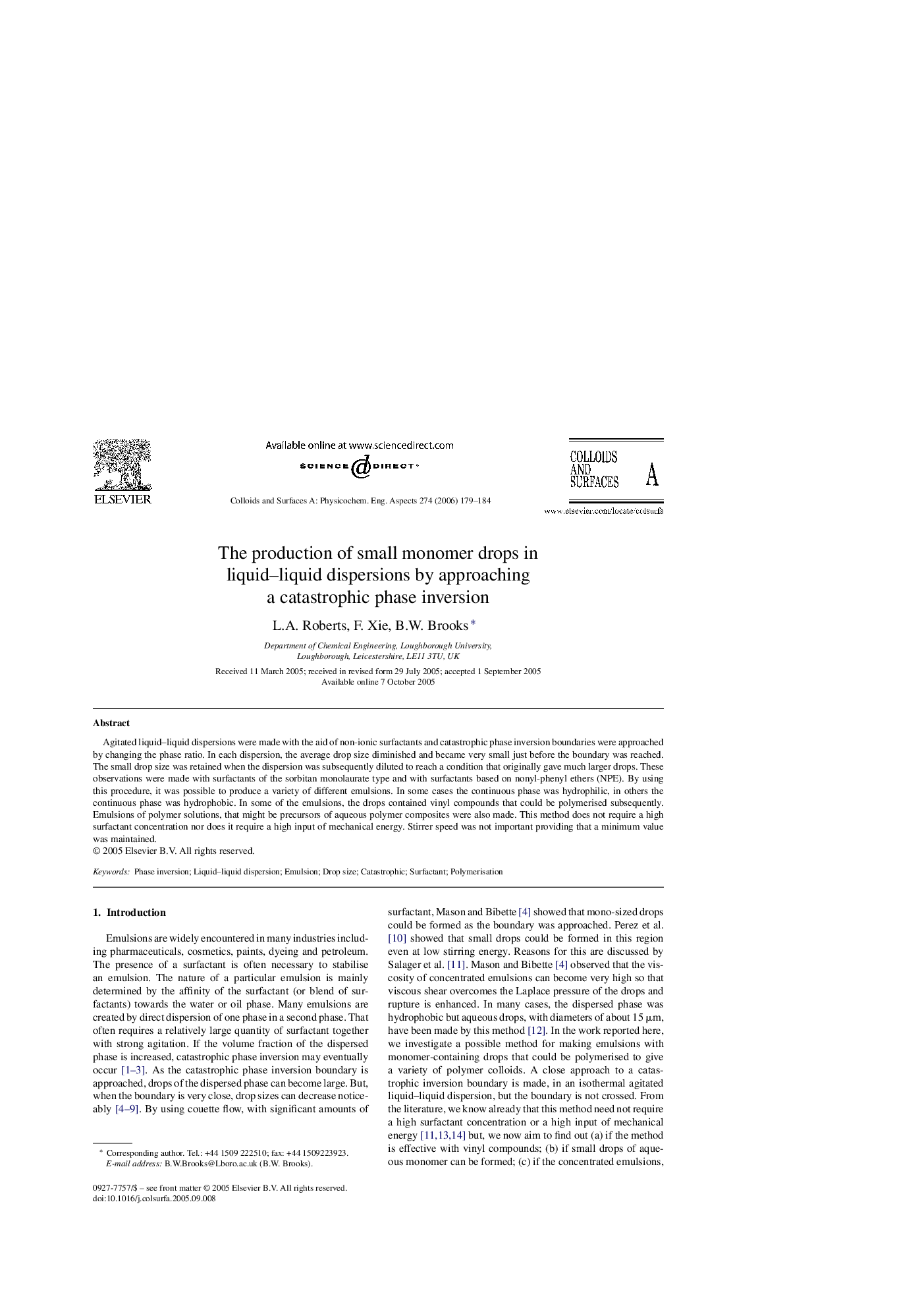| Article ID | Journal | Published Year | Pages | File Type |
|---|---|---|---|---|
| 598556 | Colloids and Surfaces A: Physicochemical and Engineering Aspects | 2006 | 6 Pages |
Agitated liquid–liquid dispersions were made with the aid of non-ionic surfactants and catastrophic phase inversion boundaries were approached by changing the phase ratio. In each dispersion, the average drop size diminished and became very small just before the boundary was reached. The small drop size was retained when the dispersion was subsequently diluted to reach a condition that originally gave much larger drops. These observations were made with surfactants of the sorbitan monolaurate type and with surfactants based on nonyl-phenyl ethers (NPE). By using this procedure, it was possible to produce a variety of different emulsions. In some cases the continuous phase was hydrophilic, in others the continuous phase was hydrophobic. In some of the emulsions, the drops contained vinyl compounds that could be polymerised subsequently. Emulsions of polymer solutions, that might be precursors of aqueous polymer composites were also made. This method does not require a high surfactant concentration nor does it require a high input of mechanical energy. Stirrer speed was not important providing that a minimum value was maintained.
